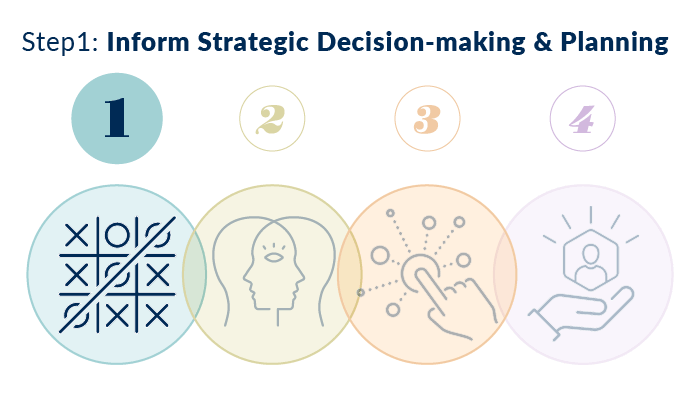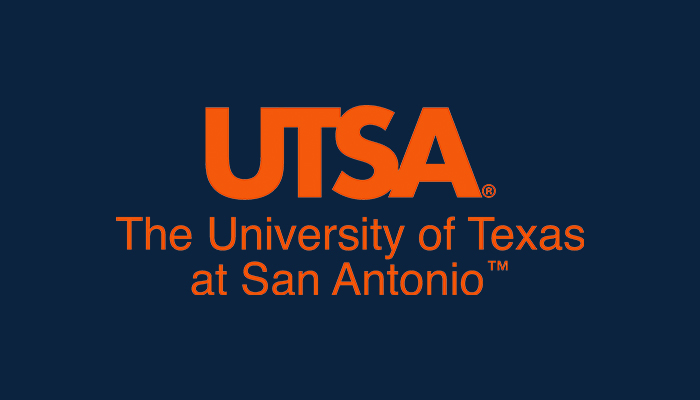Colleges and universities are currently facing challenges to their long-term financial stability, including a shrinking number of high school graduates, increasing alternatives to postsecondary education, and a shifting labor market. Higher education leaders recognize that achieving improved student outcomes requires more than a quick fix. Those who’ve found the most success understand that financial stability requires investing in a student success model that supports students and fiscal health.
We aimed to gain insight into how our partner institutions create fiscally sustainable student success models to overcome the significant challenges their students face. To achieve this, we measured the impact of student success initiatives on student persistence at 48 partner institutions.
We discovered an important trend among the most successful institutions. Those who achieved 4-5 times ROI from their student success initiatives use a responsive, strategic process incorporating data-informed decision-making, coordinated efforts, informed action, and consistent assessment.

Here we explore the first step in this process, strategic decision-making and planning. In this step, leaders use a broad range of actionable analytics–such as LMS engagement relative to peers, in-progress grades, the impact of specific courses on graduation, persistence and completion predictions, and initiative effectiveness—to continuously inform strategy at all levels and across departments.
Achieving Financial Stability Leadership Brief
Responsive Strategic-Decision Making and Planning Improves Outcomes
In the current landscape, student retention is crucial to institutional stability and sustainability. However, it’s no longer sufficient to focus solely on academic support to increase student retention. Like society, students face many holistic challenges that impact their ability and willingness to persist toward their educational goals.
Leadership teams that achieve a significant return on their investment in student success use actionable analytics to gain a broad and deep understanding of their student’s specific challenges. They use these insights to guide strategic decision-making and planning on a consistent and ongoing basis. They regularly adjust strategies as new information surfaces around the variables impacting students’ success and their program effectiveness.
Empowering campus leaders with up-to-date institution-specific data in accessible formats they can easily segment and compare is crucial to evaluate which strategies and interventions yield the best results. Taking this approach equips leadership teams to discontinue ineffective strategies and allocate more resources to the ones that work.
Snow College in Ephraim, Utah, embarked on a strategic enrollment and retention planning process. They observed that lower-performing students had significantly higher persistence rates when they had a one-on-one advising session, while the same intervention did not significantly affect higher-performing students’ persistence. Snow administrators used this insight to introduce group advising sessions and adjust advisor caseloads. These changes enabled advisors to provide personalized support to students who needed it most, resulting in more cost-effective and equitable student support.
Student Success Analytics Reveal Opportunities to Deliver Personalized Support at Snow College
Refine Student Success Strategy with Actionable Analytics
Effective leaders adopt a living process that thrives through ongoing analysis and continuous modification of tactics and strategies to support students.
At the University of Texas at San Antonio (UTSA), data-informed strategic decision-making is a weekly process rather than a one-and-done event. Administrators meet to review student success data and adjust strategies and services accordingly. The leaders overseeing key departments then coordinate services to provide students with academic support, career, and engaged learning opportunities, digital fluency, engagement, or a sense of belonging. Consequently, the institution is increasingly proactive in responding to students’ needs, and UTSA’s student success outcomes reflect this success. From 2012 to 2022, they achieved a 16 percentage point increase in first-year student retention and a 14 percentage point increase in six-year graduation rates.
Keeping data analytics at the center of strategic conversations also fosters buy-in and broad collaboration across the institution, enabling administrators, faculty, and staff to communicate better and coordinate their efforts. Ongoing data analysis helps refine student success strategies, allowing them to significantly impact student success in the term.
UTSA Achieves 16% Retention Lift with Data-Activated Student Support Ecosystem
Respond Quickly to Evolving Student Needs
To achieve financial stability, leaders must adopt data-activated student success models that improve student outcomes and generate net tuition revenue. This means moving away from one-size-fits-all, standard approaches to more tailored, institution-specific approaches that enable leaders and their teams to respond quickly to changing student needs.
By consistently utilizing actionable insights to evolve strategic decision-making and planning, higher education institutions can prioritize support where needed and implement the right combination of programs and policies to deliver positive ROI to ensure long-term fiscal health.







